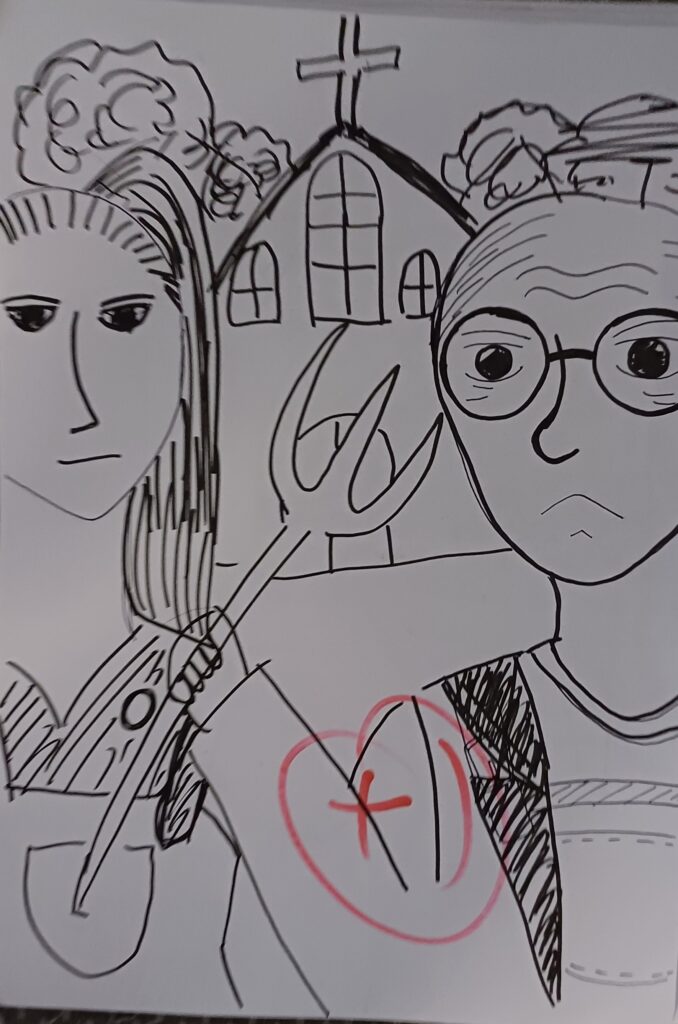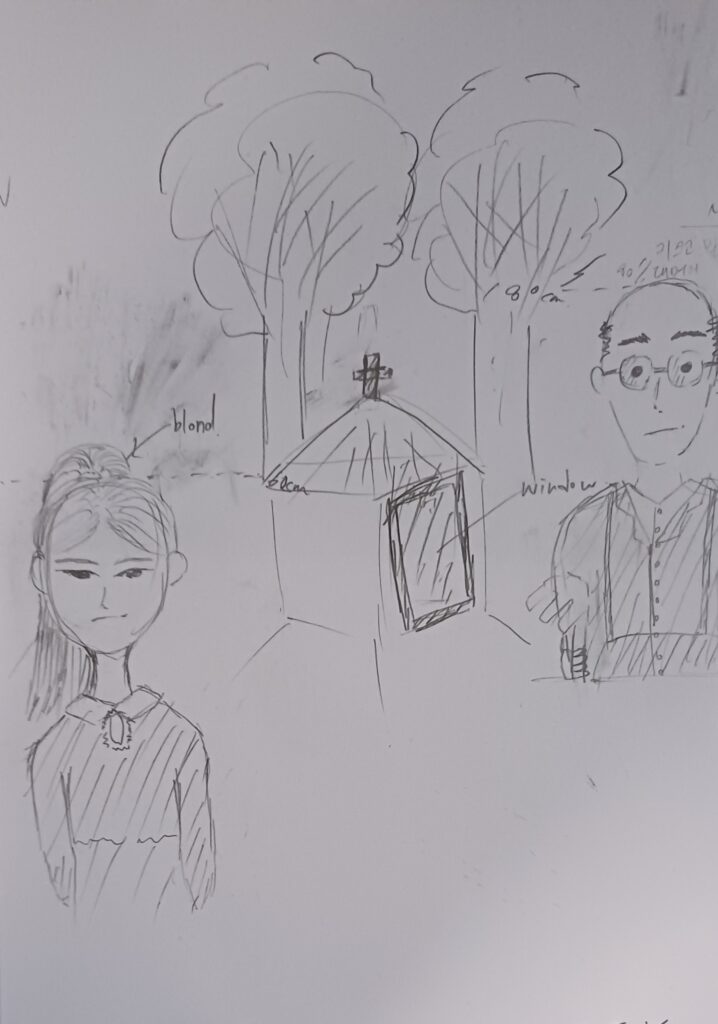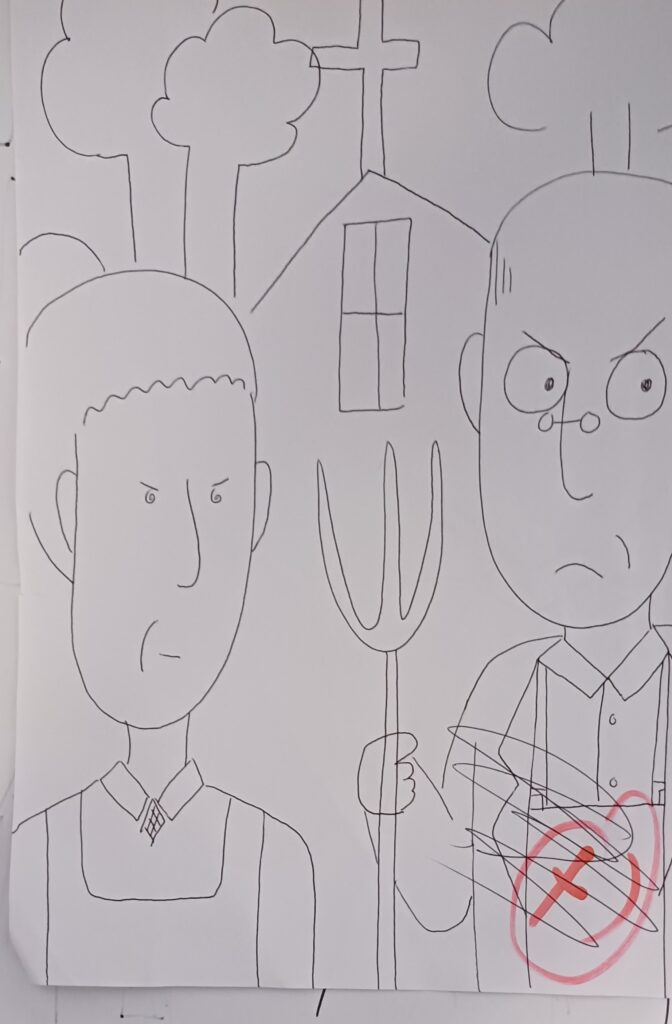Describing a picture/photo
Age: 10 years and above
Level: Intermediate/Advanced
Set up time: 5 mins
Running time: 15-25 mins
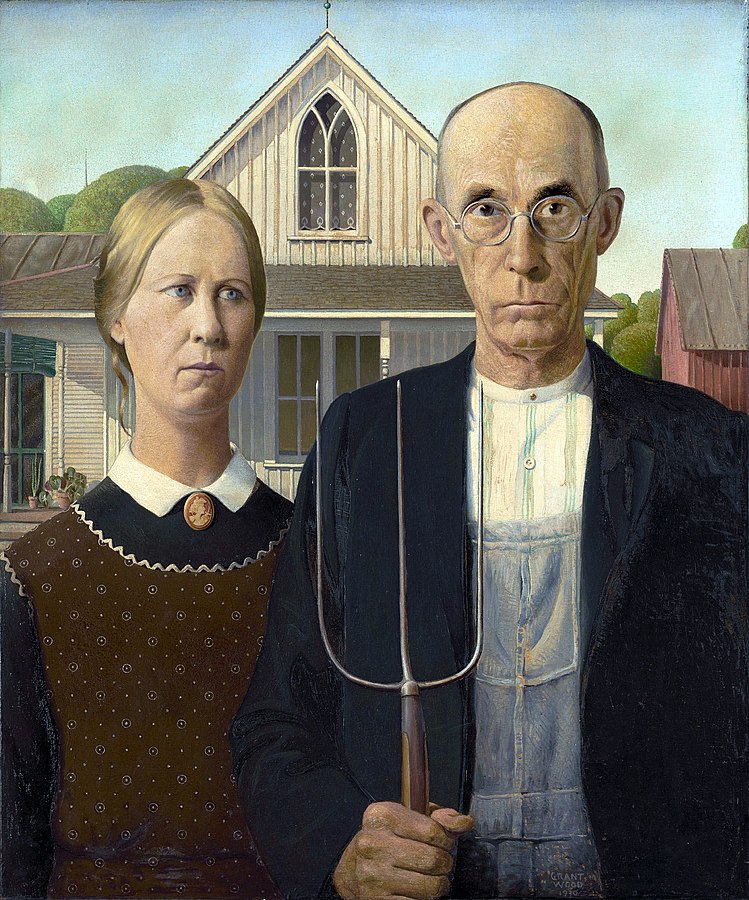
This is a fun ESL lesson to teach, and the students also really enjoy the challenge. In the lesson, one party describes a painting in detail, and the other party or parties listen and sketch out the scene, including as many small details as possible.
The painting on the left is ‘American Gothic‘(1930) by Grant Wood.
How would you describe it to your students as a teacher?
Which part of the painting would you start describing first?
In what order would you describe things in the scene, and what minor details would you include?
Lastly, what language structures would you use so students can listen and sketch out the picture and the fine details that give the painting its unique feel?
Lesson Plan
This exercise should first be modeled with the teacher taking the describing role. In this way, the teacher can methodically and clearly describe a picture that is a model for the students to follow the next time. Subsequent exercises should see the students working together in pairs.
Teacher to Student
Below is a part of the transcription of the teacher (me) describing American Gothic to a class of my students. I’m trying to use language and structures that the students have already had some practice with in previous lessons. If I need to describe an object they may not know the word for (in this case, dungarees), I talk about it so they can guess what I am describing.
Underneath the transcription, you can see a few examples of the students sketching out the picture. Don’t scroll down yet, though! Read through the transcription and refer to the original image.
The teacher’s voice and actions are in this color for readability.
‘Ok, first of all, turn your sheet of paper to portrait style like this (the teacher holds up and turns their sheet of paper to portrait style).
So in this picture, there are two people, a man and a woman. I think maybe they are a husband and wife. They are standing at the front of the picture. The man is on the right and the woman is on the left. I will describe the man first. He is pretty old, and I think he is in his late fifties or early sixties. He looks tall and slim, a little taller than the woman, and his head starts about here (points to the paper). Starting from about here, I can see his body in the picture (the teacher points to their waist), but I can’t see his left shoulder or left arm outside the picture.
So he has a long head and a long, thin face. Looking at his hair, I can see he is very bald, but I can see a little, just a little hair on the top and sides of his head. As I said, he has a long, thin face and a long, straight nose. Describing his eyes, he has big, round, cold eyes. Oh, and he’s wearing glasses, but the glasses are round (indicates). He looks unfriendly, grumpy, and he isn’t smiling.
He is wearing a white shirt, but the shirt doesn’t have a collar. I can see two buttons on the shirt. Over the shirt, he is wearing a pair of dungarees. Dungarees are kind of like jeans, but they are longer, and they come up to here (indicates) and have straps.
Then, over the dungarees, he is wearing a long black jacket. So, as I said, his left arm is outside of the picture, but in his right hand, he is holding a fork. But um, it isn’t a small fork—it’s a long, thin fork—like a farmer’s fork! …and it has three points (indicates). Ok, so now let’s talk about the woman.
So here are the students’ sketches….aren’t they great? I love the glasses on the third one …lol (maybe I’m biased)
Student to Student
The exercise aims to produce an accurate sketch of a picture or photo. Therefore, the student in the describing role must try to include as much detail as possible in their descriptions. In turn, the student in the sketching role can double-check and ask for any additional information they may need.
In the exercise, students are first divided into pairs. One student is given a picture or photo to describe in detail to their sketching partner.
It is important to ensure that, in addition to the ‘listening sketcher’ not being able to see the original picture, the ‘speaking describer’ can not see how the sketcher’s picture is progressing. One way to achieve this is to have the students sit face-to-face but at a slight distance from each other. Another option is to have the students sit back to back, facing away from each other. This has the added benefit of eliminating any ‘helpful’ body language by the describing student.
This is not an easy exercise, and students may soon find themselves out of their ‘language comfort zone’ and struggling to describe the picture. It is here that the exercise takes another useful turn. All second-language speakers will find themselves in a situation where they lack the necessary vocabulary to communicate what they want to say. So, this exercise leads students to paraphrase and negotiate around the gaps in their language to convey their meaning.
Of course, the choice of picture is essential for the exercise. When selecting material, it is a good idea to look at the image from the student’s viewpoint and imagine the challenges they would face in describing it. In reality, the image shouldn’t contain more than a few details of interest to avoid making the activity too difficult. Challenging but not impossible is the mantra. During the exercise, it is essential for the teacher to actively monitor the class to ensure that the students are not cheating and only using English, as well as to guide and help as much as possible.
I’m sure you will already have a few ideas of pictures/ paintings to choose from, but if you are struggling, here are a few pictures I’ve used in the past. All of them have their challenges to describe, but they are not so tricky that either the describing student or the listening student gives up on the task.
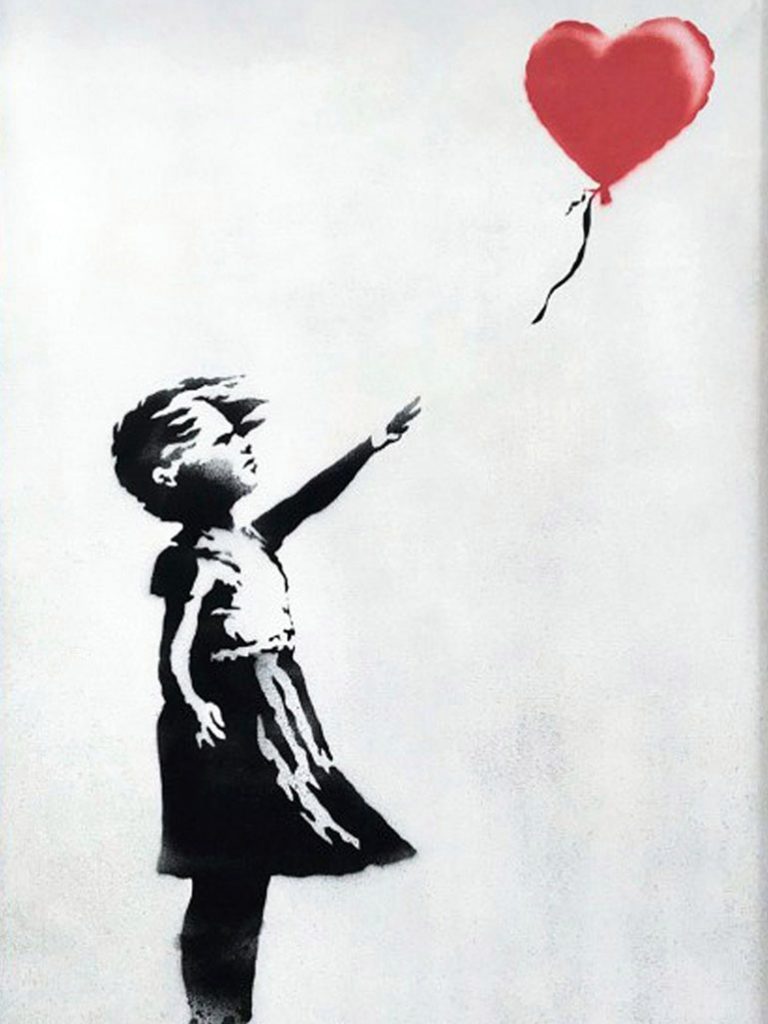
‘Girl with a Red Balloon‘ (2002) by the street artist Banksy is a nice, simple one to try. There is no really difficult vocabulary, and most students usually make a good attempt at describing and sketching this painting.
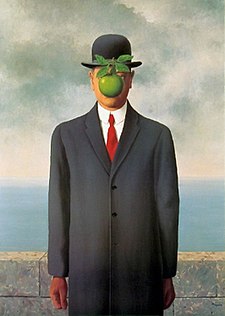
‘The Son of Man‘ (1964) by Magritte is an iconic yet relatively simple painting like’ American Gothic’. I like it because even low-level students can describe and sketch out the basics of the picture. Additionally, higher-level students can try to explain and sketch some of the minor details of the painting.

Anything with the Simpsons in it will be significant because they are reasonably simple to sketch. Anything where a Simpson invades a classic painting is double good!

‘The Caveman‘ (2008) is another fun painting by Banksy and offers the students plenty of challenges to negotiate meaning in describing this fine fellow. To help the students and to defend their modesty, I would pre-teach the word ‘shadow’.
Debrief Session
At the end of the activity, the students can compare the original painting with their sketches. They will be aware of details they struggled to describe or sketch in the painting and will be interested in how it should be done. So, while everything is fresh, the teacher can just talk through how they would describe details in the picture. This way, the students can listen to the teacher’s description to see what they were saying right and wrong, hopefully improving on it for the next session.
……………………………………………………………………………………………………………………………………………………………………………………………………………………………………………..
For a whole host of fun exercises to do in the classroom for students of all ages and levels I have a one-stop classroom activity book available….
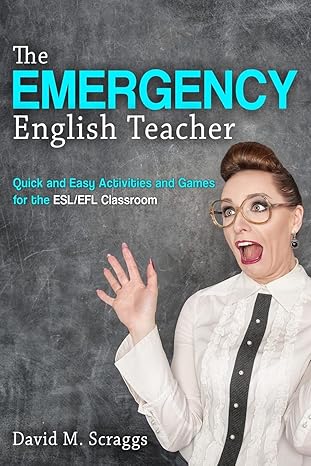
Ok, let’s crack on to the next lesson!
